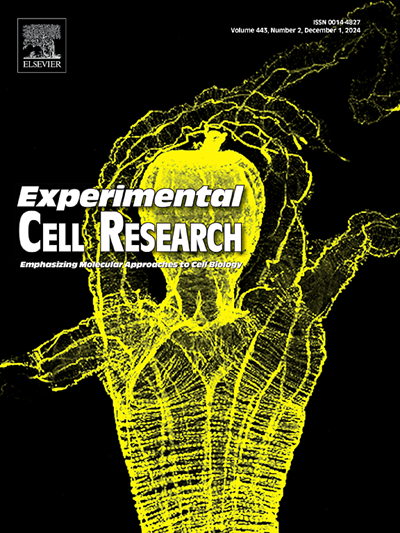Plasmin reduces human T cell arrest on endothelial-like cells by cleaving bound CCL21 from the cell surface
IF 3.3
3区 生物学
Q3 CELL BIOLOGY
引用次数: 0
Abstract
CCL21 is a key homeostatic chemokine best known for its role in lymphocyte homing and compartmentalization in the lymph node. CCL21 also plays a role in trans-endothelial migration and is known to be bound to the surface of endothelial cells in high endothelial venules and inflamed tissues. The effects of CCL21 are highly dependent on its form; full-length CCL21 can bind to the surface of endothelial cells and induce lymphocyte arrest and transendothelial migration, whereas truncated CCL21 cannot. Earlier literature indicates that plasmin can cleave CCL21 from the surface of immune cells, although the mechanism regulating this process on endothelial cells has not been studied.
This study demonstrates that the human endothelial-like cell lines ECV304 (LS12) and HMEC-1 can bind the plasmin precursor plasminogen to their cell surface. Furthermore, ECV304 (LS12) cells could endogenously activate plasminogen, yielding plasmin that subsequently released cell surface CCL21. In contrast, cell-surface CCL21 was only released from HMEC-1 after exogenous tPA activated the surface-bound plasminogen. Finally, it was shown that plasmin reduced T cell adhesion to endothelial-like cells with cell surface CCL21 under shear stress conditions.
Collectively, for the first time, these data demonstrate that plasmin can cleave endothelial cell surface CCL21, reducing T cell adhesion to endothelial cells under shear stress. Interestingly, this study also indicates that endothelial cells’ differential expression of plasminogen activators may regulate plasmin availability and influence T-cell arrest.
纤溶蛋白通过从细胞表面切割结合的CCL21来减少人T细胞在内皮样细胞上的阻滞。
CCL21是一种关键的稳态趋化因子,以其在淋巴结淋巴细胞归巢和区室化中的作用而闻名。CCL21还在跨内皮迁移中发挥作用,已知在高内皮小静脉和炎症组织中与内皮细胞表面结合。CCL21的作用高度依赖于其形态;全长CCL21可以结合内皮细胞表面,诱导淋巴细胞阻滞和跨内皮迁移,而截短的CCL21则不能。早期文献表明,纤溶酶可以从免疫细胞表面切割CCL21,但对内皮细胞调节这一过程的机制尚未研究。本研究表明,人内皮样细胞系ECV304 (LS12)和HMEC-1可以将纤溶酶前体纤溶酶原结合到细胞表面。此外,ECV304 (LS12)细胞可以内源性激活纤溶酶原,产生纤溶酶,随后释放细胞表面的CCL21。相比之下,只有外源性tPA激活表面结合的纤溶酶原后,细胞表面的CCL21才从HMEC-1中释放出来。最后,研究表明,在剪切应力条件下,纤溶酶降低了T细胞对具有细胞表面CCL21的内皮样细胞的粘附。总的来说,这些数据首次证明了纤溶酶可以切割内皮细胞表面CCL21,减少T细胞在剪切应力下对内皮细胞的粘附。有趣的是,这项研究还表明内皮细胞的纤溶酶原激活剂的差异表达可能调节纤溶酶的可用性并影响t细胞阻滞。
本文章由计算机程序翻译,如有差异,请以英文原文为准。
求助全文
约1分钟内获得全文
求助全文
来源期刊

Experimental cell research
医学-细胞生物学
CiteScore
7.20
自引率
0.00%
发文量
295
审稿时长
30 days
期刊介绍:
Our scope includes but is not limited to areas such as: Chromosome biology; Chromatin and epigenetics; DNA repair; Gene regulation; Nuclear import-export; RNA processing; Non-coding RNAs; Organelle biology; The cytoskeleton; Intracellular trafficking; Cell-cell and cell-matrix interactions; Cell motility and migration; Cell proliferation; Cellular differentiation; Signal transduction; Programmed cell death.
 求助内容:
求助内容: 应助结果提醒方式:
应助结果提醒方式:


